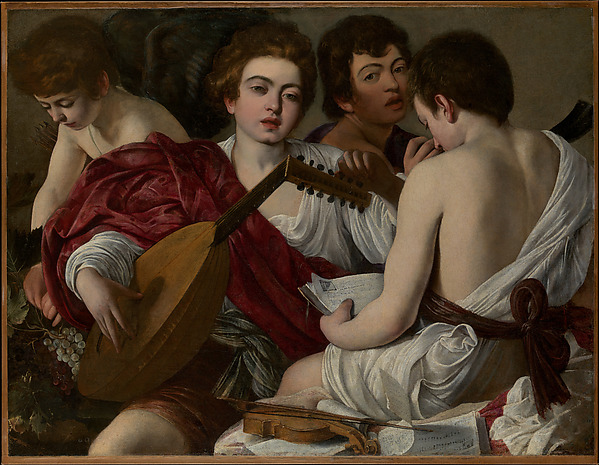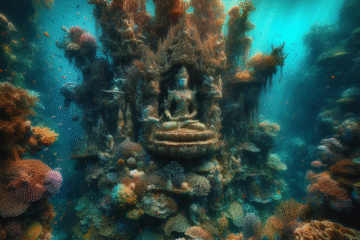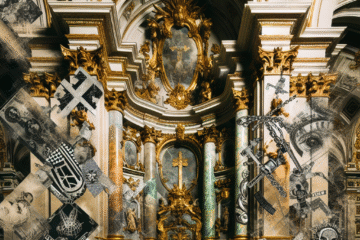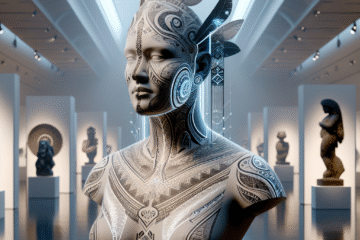
“
There are two ways of spreading light: to be the candle or the mirror that reflects it.
”
— Edith Wharton
The Mirror Cracked: Self-Portraiture from Caravaggio to Cindy Sherman
Introduction: Reflections Across Time
The self-portrait is one of the most enduring and revealing genres in the history of visual art. It is the artist’s declaration of presence, a dialogue between the creator and their mirror image — sometimes intimate, sometimes confrontational. From the dramatic chiaroscuro of Caravaggio to the transformative masquerades of Cindy Sherman, self-portraiture has morphed into a complex language of identity, self-inquiry, and cultural critique. In examining this genre across different historical epochs, we begin to understand how artists have negotiated the fine line between self-revelation and performance.
Chapter 1: The Baroque Mirror – Caravaggio and the Birth of Psychological Intensity
Michelangelo Merisi da Caravaggio (1571–1610) was one of the first artists to imbue self-portraiture with psychological depth. In Caravaggio’s works like “Young Sick Bacchus” (c. 1593), he turns the canvas into both a theatrical stage and a confessional. The image of himself as a pale, intoxicated Bacchus — possibly painted during a bout of illness — reveals both vulnerability and psychological complexity. This period, shaped by Counter-Reformation ideals and the rise of Baroque theatricality, encouraged dramatic narrative and personal piety. Caravaggio embraced this, pioneering a raw and realistic portrayal of the self that broke from Renaissance idealism. His use of chiaroscuro — the stark contrast of light and shadow — did not just shape the aesthetics of the era but metaphorically mirrored the human inner conflict between divine aspiration and earthly transgression.
Chapter 2: Enlightenment and the Studio Gaze – Self as Genius
By the 18th century, the self-portrait took on new dimensions as artists began positioning themselves as enlightened intellectuals. Figures like Élisabeth Vigée Le Brun used self-portraiture not only to demonstrate technical mastery but to assert professional autonomy in a male-dominated field. In her 1790 self-portrait, Vigée Le Brun smiles as she paints — a subtle yet radical gesture at the time. In this era of empirical reason and social upheaval, self-portraits became tools to construct one’s biography and assert one’s agency. Artists like Francisco Goya engaged their own likeness to explore broader existential questions, as in his haunted later self-depictions that reflect Enlightenment skepticism and personal disillusionment.
Chapter 3: Romanticism to Modernism – The Inner Self Emerges
The 19th and early 20th centuries witnessed the artist turn inward as Romanticism, Symbolism, and eventually Expressionism foregrounded personal emotion and the unconscious. Vincent van Gogh’s many self-portraits are not merely records of appearance, but attempts to visualize despair, resilience, and mental instability. Each stroke is charged with emotional urgency. Later, Egon Schiele’s self-portraits displayed twisted, emaciated figures that presented sexuality and vulnerability with brutal honesty. These modernist explorations echo broader philosophical movements — Nietzsche’s concept of the fragmented self, Freud’s psychoanalysis, and Kierkegaard’s existential angst. Self-portraiture during this period became less about likeness and more about revealing the inner storm.
Chapter 4: Postmodern Performance – Cindy Sherman and Identity as Masquerade
With the rise of postmodernism and identity politics in the late 20th century, self-portraiture evolved into a tool of cultural critique. No one embodies this transformation more compellingly than Cindy Sherman. Her “Untitled Film Stills” series (1977–1980) features her dressed in the guises of stereotypical female characters from mid-century cinema, questioning the construction of gender and identity. Sherman’s photographs reject the traditional notion of an ‘authentic’ self in favor of performance and multiplicity. Her approach dovetails with poststructuralist theories — particularly those of Judith Butler and Michel Foucault — that regard identity as fluid and performative. Technological advances in photography and mass media enabled this shift, making the image not a reflection of self, but a site of transformation.
Chapter 5: The Digital Mirror – Self-Portraiture in the Age of Algorithms
In the 21st century, self-portraiture has spilled into everyday life through selfies, social media, and digital avatars. While some argue this proliferation cheapens the genre, others highlight its democratic potential. Artists like Amalia Ulman, who staged a fictional persona on Instagram in her performance piece “Excellences & Perfections” (2014), have pushed the boundaries of what constitutes self-portraiture. New media makes the self visible in unprecedented ways, raising questions about surveillance, digital identity, and authenticity. AI-generated images and augmented reality now enable users to manipulate their likeness endlessly, echoing — and extending — Sherman’s theatrical approach. In a time when our digital reflection is often more visible than our physical one, self-portraiture becomes both confession and code.
Conclusion: Fractured Mirrors, Infinite Selves
From Caravaggio to Cindy Sherman and beyond, self-portraiture has remained a locus of self-inquiry, aesthetic experimentation, and social commentary. It reflects not only how artists see themselves but how they navigate their culture, philosophy, and technology. Whether rendered in oil, film, or pixels, the artist’s image poses perennial questions: Who am I? How do others see me? And whose gaze shapes the self I project? The mirror may be cracked, but through its fractures, we see deeper truths.



